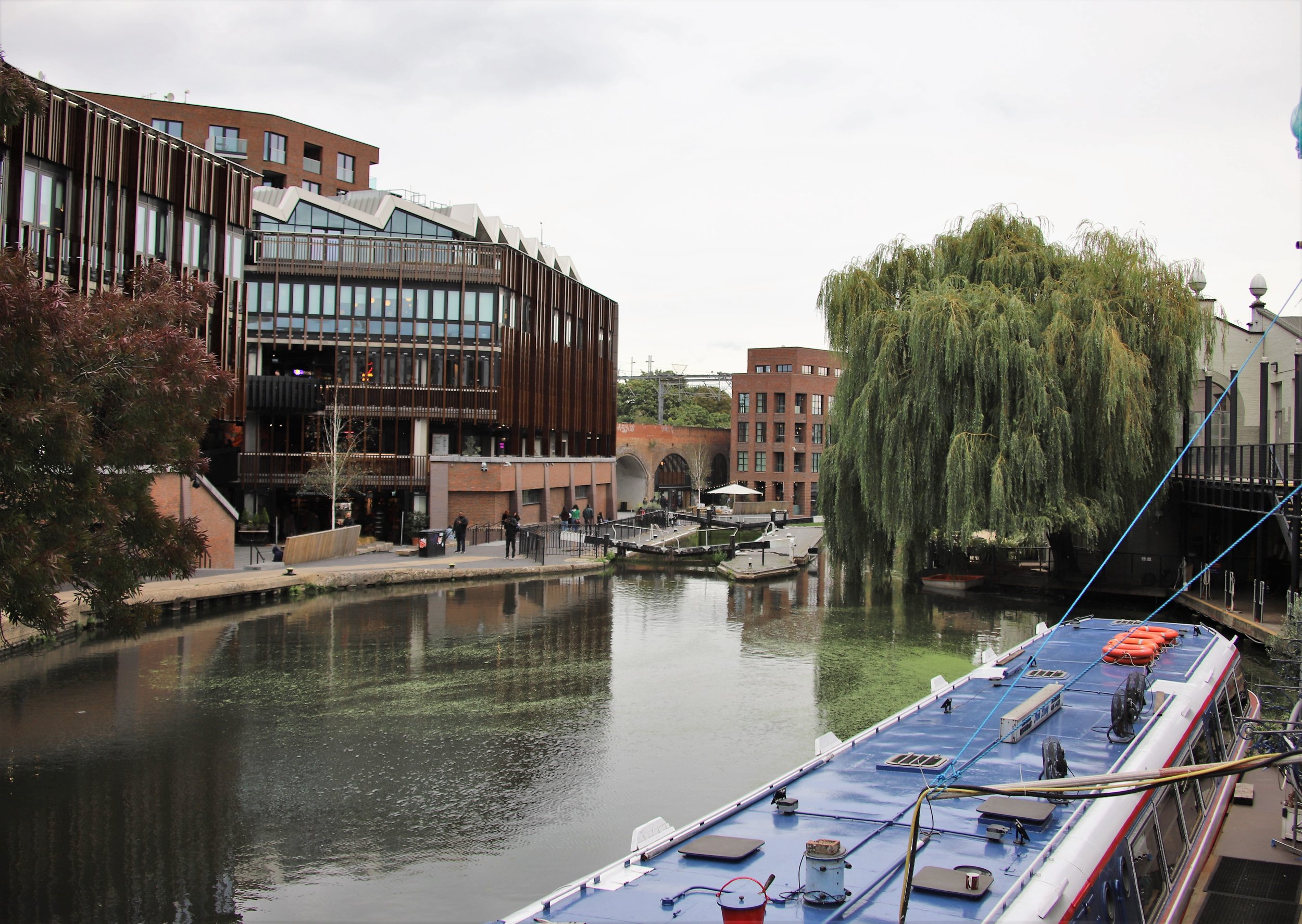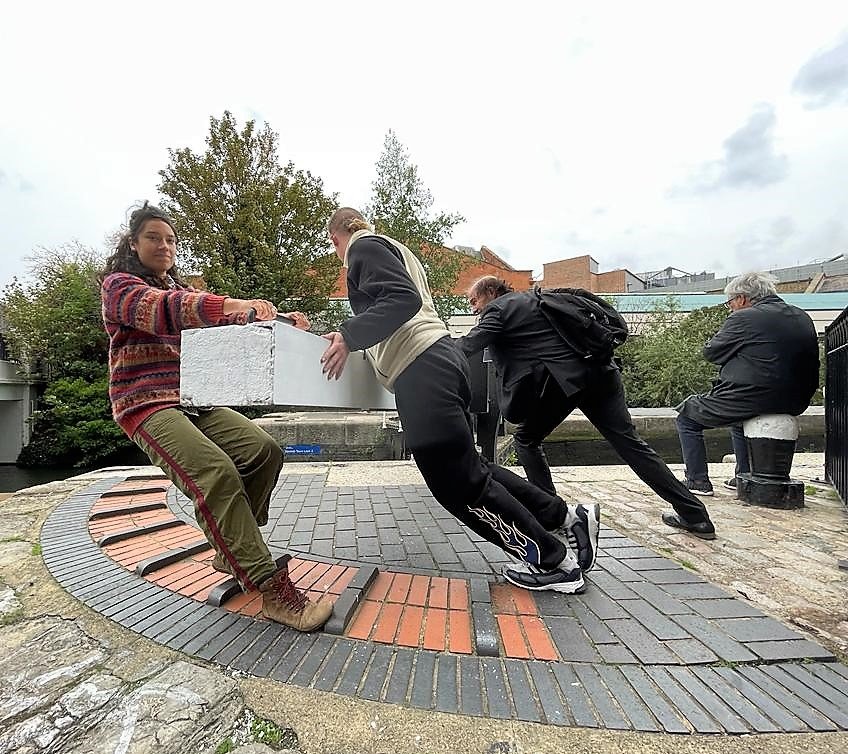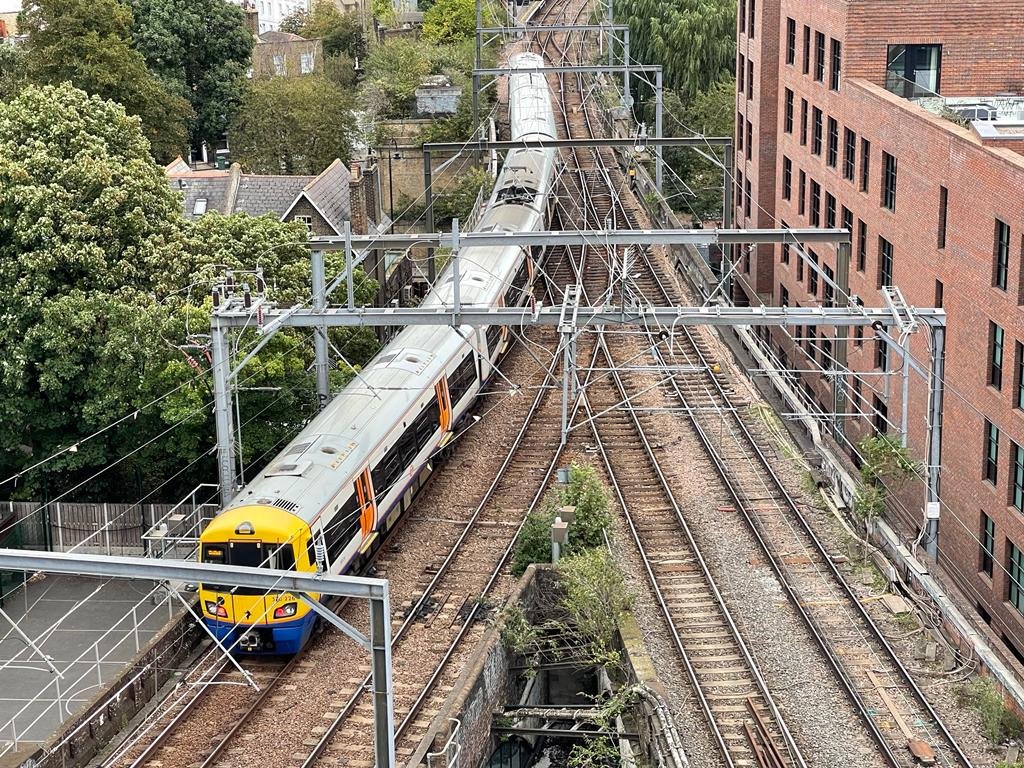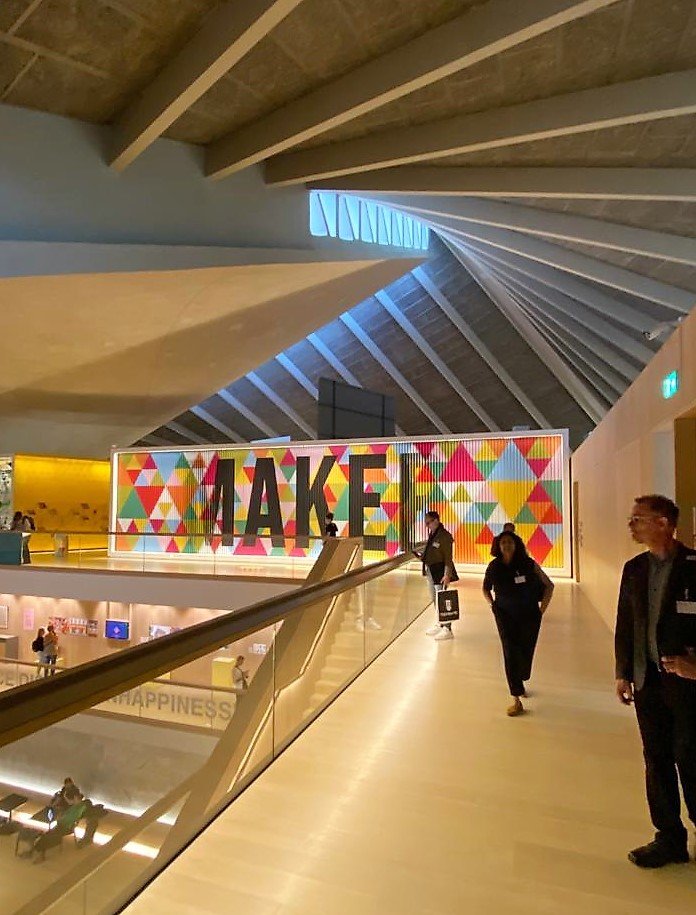3 - Day 1: AIA International LONDON 2022 – King’s Cross and Camden
Fiona Mckay
Photo credit (from Argent slide): Y Kinksky
At the AIA London 2014 Conference, a full day had been dedicated to developments at King’s Cross. Since then, this north London area has continued its transformation from a derelict industrial landscape into a thriving, vibrant mixed-use London district. It was, therefore, agreed that a return visit for London 2022 was in order on Day 1 of the Conference – Friday, 30 Sep 2022.
Morning Venue – Samsung KX, Coal Drops Yard, King’s Cross
The 2022 Conference venue – the Coal Drop Yards – prosaically described as a ‘shopping destination and foodie hotspot’. Designed by Thomas Heatherwick and opened in 2018, Coal Drop Yard retains the charm of its industrial heritage, while the Samsung XX showroom provided state of the art presentation facilities.
Photo credits: L Jorgensen (AIA Alaska)
Talk - ‘King’s Cross – Ten Years On’ / Morwenna Hall, COO and Partner, ARGENT
Photo credit (from Argent slide): L Jorgensen (AIA Alaska)
MORWENNA HALL displayed a graphic ‘timeline’ summarising developments that have been completed in the past two decades at King’s Cross - ‘a traffic free oasis in the heart of London’.
This includes an impressive array of open public spaces, repurposed industrial buildings, and modern interventions - many of which were viewed in the afternoon’s walking tour with Argent.
From the start, Argent developed an impressive, long term master plan and stuck with it. Its ten ‘principles for a human city’ which underpin King’s Cross served the project well.
Photo credit (from Argent slide): L Jorgensen (AIA Alaska)
Talk - ‘Context in Architecture’ / Alison Brooks, Founder & Creative Director, ALISON BROOKS ARCHITECTS
Photo credit – Y Cheong (AIA I)
ALISON BROOKS revealed her design philosophy by taking attendees through her earliest experiences. As a Canadian, she was familiar with natural wilderness; on moving to London, she learned to love London squares, cloisters, and Georgian terraces. Urban design and context represent ‘everything’ to her and continue to influence her designs.
For example, the neoclassical courtyard at Somerset House provided part inspiration for her work at King’s Cross. Brooks eloquently described how the design of her King’s Cross residential project, Cadence, evolved – the layouts, the arches, and – of course – the context.
Similarly, the philosophy behind the other project highlighted in her talk – Cohen Quad, Exeter College, Oxford – also evolved from early influences. Oxford with its abundance of squares and cloisters was a perfect location for Brooks. However, the typical Exeter College square was pulled apart – transformed - to fit the linear site. A system of wood arches turned the project’s internal circulation route into a modern cloister.
Photo credits: L King (AIA UK)
Presentation – ‘The Path Towards Decarbonisation’ / Andrea Allievi, IRIS CERAMICA GROUP
ANDREA ALLIEVI, representing the AIA UK Chapter and Conference sponsor, Iris Ceramica, celebrated his company’s 60 years ‘Shaping the Future’, through sustainability, beauty and innovation - values which he stressed, ‘have always been in our DNA’.
As part of ICG’s long term transition to the exclusive use of renewable energy for zero emissions, Allievi highlighted a new, Italian factory opening in 2022. Instead of using just natural gas, the new factory combines native technologies that mix gas with green hydrogen. By 2050, it will function on hydrogen alone. Active Surfaces®️ is another ICG zero emission project.
Photo credit: Andrea Ricco (AIA UK guest)
Talk - ‘Captured Light – 22 Handyside’ / Phil Coffey, Founder, COFFEY ARCHITECTS
Photo credit: ©Tim Soar, courtesy of Coffey Architects
As a child, PHIL COFFEY travelled extensively with his photographer father while he worked, and that experience has stayed with him. His architectural work is imbued with modulated light, and he remains intimately connected to the visual environment. Coffey’s talk – replete with remarkable imagery - was described by one attendee as ‘coherent from end to end’.
22 Handyside is a building that ‘considers the health of its users’, and – as expected from his photographic backstory – its massing and façade generate interactions of shadow and light. The building’s form was orientated to optimise heat gain, directional flow, and outward views – all part of Coffey’s quest for BREEAM Outstanding recognition.
The building’s position over train and underground tunnels determined a super lightweight structure. This has given the building an airiness and elegance unusual in a King’s Cross setting.
During construction, one irate and not particularly discerning passer by expressed concern that the building would be ‘just another parking lot’. However, as witnessed on Argent’s afternoon walking tour, the lightweight office building with its filigree façade literally sparkles in sunshine.
Walking Tour – ‘King’s Cross Centre’ – ARGENT Team
Photo credits: B Coldefy (AIA CE) and L Jorgensen (AIA Alaska)
Although almost completed, there is still considerable ongoing construction at King’s Cross. Whereas the near environs to St Pancras and King’s Cross stations is now well-known, many of the buildings at the northern site observed on the walking tour are newly – post pandemic – completed or still under construction, including Alison Brook’s Cadence project.
At the southern site close to King’s Cross station is the Google Headquarters – described as being, ‘ a ground scraper, because it is as long as the Shard [one of Europe’s tallest buildings] is high’.
Photo credit: L King (AIA UK)
Lunch Venue – St Pancras Hotel, Gallery / Ladies Smoking Room
Lunch was served at one of London’s most prominent Victorian legacies – St Pancras Hotel – which offered a pleasing contrast to the modern buildings on the Argent walking tour.
Photo credits: (top) L King (AIA UK) and L Jorgensen (AIA Alaska) / (bottom) S Gold (AIA I)
Conference attendees S Gold (AIA I), C Musangi (AIA UK) and L King (AIA UK) captured the atmosphere – the Gothic charm, Victorian engineering, modern elegance – of St Pancras International Station in the Slideshow below.















Afternoon Venue – Hawley Primary School at Hawley Wharf
The Camden district is ranked as one of London’s most frequented tourist centres. Surprisingly, it is still immersed in the 1960s hippy scene, complete with multiple markets, Venturi inspired store fronts & an aura of social unrest. The charming wood columned courtyard of the Hawley School proved a welcoming staging point for a walking tour of the Hawley Wharf district and AHMM’s remarkable architectural interventions.
Walking Tour – ‘Hawley Wharf Masterplan’ / Will Lee, Director and Anita Howard, Project Architect and Associate, AHMM
Photo credit: Y Cheong (AIA I)
WILL LEE and ANITA HOWARD walked the attendees through a part of Camden dominated by the Regents Canal and a triangular segment of railway viaducts, pointing out AHMM’s new components - including public spaces and revised pedestrian routes; canal access points; under arch businesses and cinemas; underground venues; new residential halls and the primary school. Somehow the interventions maintain the ad hoc character of Camden - ‘they reboot and restore Camden’s chaotic charm’.
Photo credits: L King (AIA UK) and B Hamilton (AIA UK)
Lee took the group to view the penthouse of one of the new residential buildings and introduced non Londoners to London property prices. The luxury flat was tastefully furnished, had extraordinary views, three ensuite bedrooms and a pleasing layout, but its market driven rent of ‘£12,000/month’ seemed extraordinary – even for a packaged deal aimed at an exclusive clientele.
The highlight of the tour – unfortunately marred by increasing rain – was the centrepiece of the area – the Market Hall itself. As a foodie venue, it perfectly suited its location on the canal and its function.
Photo credit: L Jorgensen (AIA Alaska)
The Camden walkabout – despite the deteriorating weather - was one of the most photographed events of the Conference. Contributors to the Slideshow include, in no particular order: L King (AIA UK), L Jorgensen (AIA Alaska); Y Cheong (AIA I), B Hamilton (AIA UK), L Petruso (AIA UK) and Y Kinksky (AIA CE). The close up photo by ©Timothy Soar of a Haley Wharf corridor on a – contrasting - sunny day was provided courtesy of Hallford Hall Monaghan Morris.
























Written by: Lorraine D King, AIA (aka Secretary@AIAUK.org), with input from Chris Musangi, AIA, on Iris Ceramica.











































